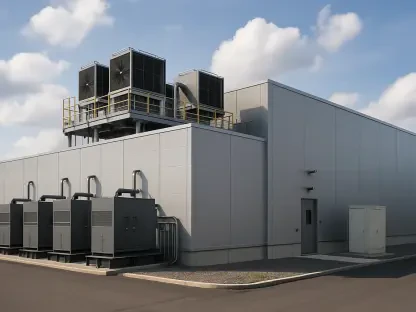As the digital landscape advances and more enterprises move to the cloud, cybersecurity approaches have had to evolve. The shift away from traditional security measures has been especially pronounced with Kubernetes, a system driving modern cloud-native architectures. Consequently, there’s a greater emphasis on strategies that are woven into the fabric of the cloud environment itself, providing a more nuanced and adaptive form of security.Kubernetes Detection Response (KDR) stands at the forefront of this evolution, offering a response mechanism that is built for the complexities of Kubernetes ecosystems. KDR not only detects threats within these intricate environments but also responds to them contextually, which is crucial given the dynamic nature of container orchestration.The move to KDR reflects a broader shift in cybersecurity—a move towards systems that are not only integrated but can also anticipate and respond to threats in real time. This change acknowledges that the cloud is a fluid space where workloads and services are constantly moving and evolving, requiring a security posture that can keep pace.Implementing KDR in cloud infrastructures requires an understanding of both the operational dynamics of Kubernetes and the potential threat vectors unique to a containerized environment. With this knowledge, KDR can deliver robust security that’s both reactive and proactive, safeguarding the modern, cloud-driven enterprise against an ever-changing threat landscape.
Introduction
Cloud security is an ever-evolving battlefield where new threats and vulnerabilities regularly emerge, necessitating the continuous development of security strategies. As more organizations transition to cloud-native architectures, specifically Kubernetes, the need for advanced and specialized security solutions such as KDR becomes paramount. This article provides insights into why KDR is essential for robust cloud security and how organizations can implement it effectively.
Understanding the Shortcomings of Traditional Cloud Security Measures
The Limits of Legacy Tools in Cloud Environments
Traditional security tools like CSPM, EDR, and SIEM were designed for static, on-premises environments and lack the contextual understanding of cloud-native threats. Without visibility into the dynamic interactions specific to the cloud, these measures fail to provide the necessary protection, resulting in a constant battle against false positives and inadequate incident response capabilities.
The Noise and Transience of Cloud Logs
The ephemeral and scalable nature of cloud services, especially with containerized workloads, generates an overwhelming amount of log data. Traditional security tools often struggle to sift through this noise to identify genuine threats, ultimately leading to operational inefficiencies and a higher risk of overlooking serious security breaches.
Transitioning to Cloud-native Security Approaches
Adapting to Modern Workloads and Technologies
The shift to Kubernetes and serverless computing demands security solutions that keep pace with the fluidity of cloud-native applications. This section highlights the need for a paradigm shift from conventional security tools to ones that offer real-time detection and response tailored to the modern cloud infrastructure.
Embracing the Role of eBPF in Kubernetes Security
Extended Berkeley Packet Filter (eBPF) technology provides deeper visibility into the interactions occurring within Kubernetes environments. This part will discuss how leveraging eBPF is essential for effective KDR, allowing organizations to monitor micro-interactions within clusters and respond to threats with greater precision.
The Hypothetical Attack Scenario: Exposing Security Gaps
Limitations of Singular Security Solutions
A step-by-step walkthrough of a theoretical attack scenario reveals the weaknesses of current security tools when facing sophisticated cloud-native threats. This portion of the article aims to demonstrate the value of a multi-layered security approach and why relying on a single solution like CNAPP may not be sufficient.
The Need for an Integrated Response Strategy
Understanding the complex nature of attacks on Kubernetes environments, this subsection will delve into why an integrated security strategy that combines KDR with other security measures is necessary to protect cloud-native architectures effectively.
Implementing Kubernetes Detection Response
The Imperatives of Container Runtime Security
This section discusses how only container runtime agents informed by eBPF can offer the deep visibility required to protect Kubernetes environments against complex attacks, underlining the move towards a Kubernetes-centric approach to cloud security.
Facilitating the Adoption of Modern Cloud Security Tools
The concluding subsection focuses on the importance of overcoming the learning curve associated with modern security tools like Kubernetes agents. It also provides insights into how organizations can prepare their teams for the transition, ensuring a proactive approach to cloud security.









